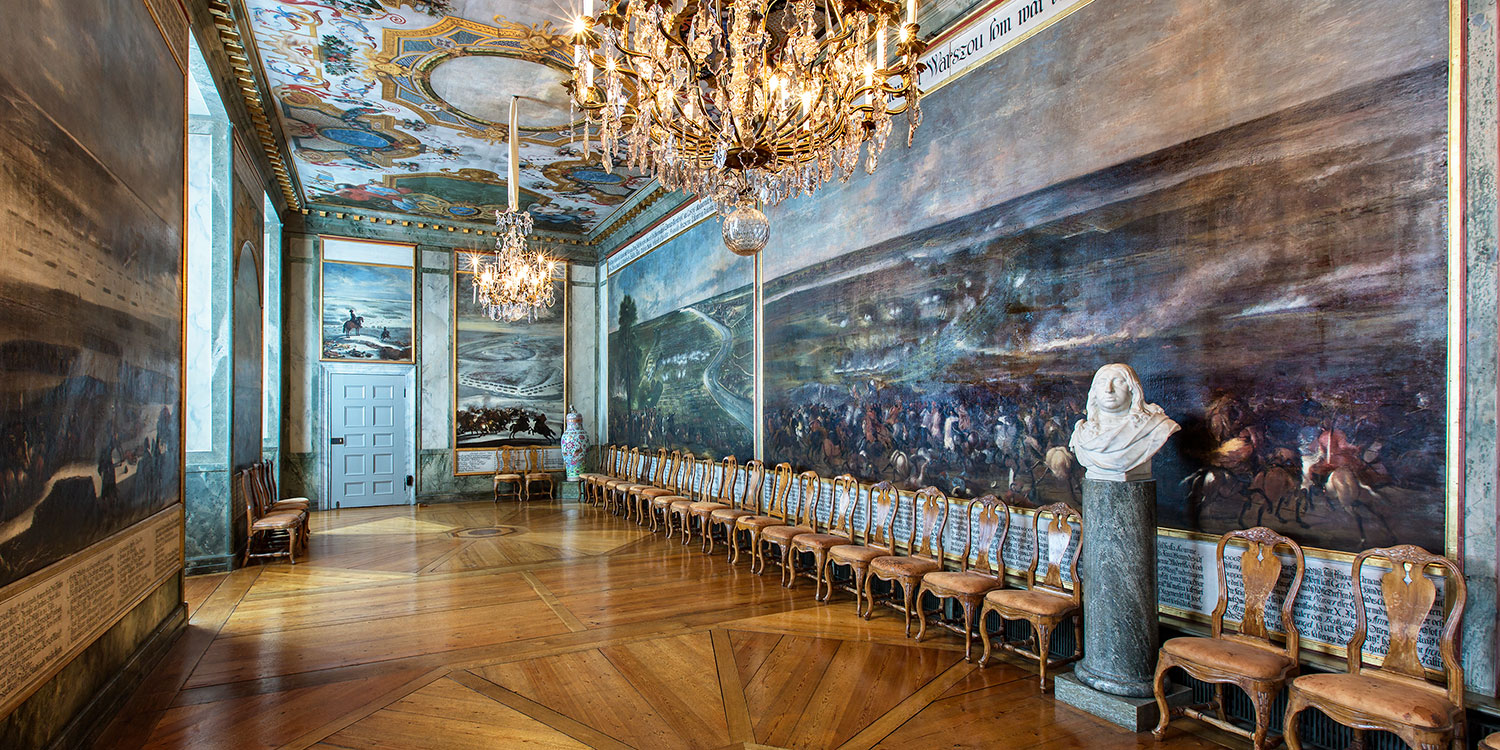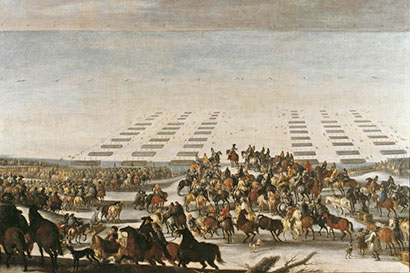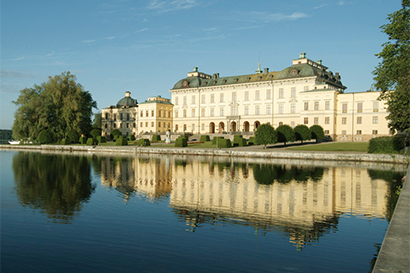
Great power, baroque and battles
“Full of life, spirit and fire”. For much of Sweden's period as a great power, Karl X Gustav was on the battlefield. And his queen didn´t held back when building the baroque palace, cementing the royal power.
Drottningholm palace shows great power and grandeur. The splendour of the royal palace became a way to confirm the power of the monarch.
Alongside Sweden’s grandest baroque rooms, Drottningholm palace has several galleries in memory to the Swedish king’s military exploits during the great power.
In King Karl X Gustav’s Gallery, the wars against Poland and Denmark in the 1650s are depicted. The artist Johan Philip Lemke produced ten battle paintings based on General Erik Dahlberg’s documentary sketches.
“full of life, spirit and fire”
The paintings faithfully portray realistic landscapes, military battle scenes and individual destinies. Palace architect Tessin the Younger described Lemke’s battle paintings as being “full of life, spirit and fire”.
The March Across the Great Belt
The march across the Great Belt in winter 1658, perhaps King Karl X Gustav’s most famous achievement, is depicted in one of the window wall paintings by Johan Philip Lemke.
The 17th century was the coldest century of the Little Ice Age, and the Scandinavian winters were incredibly cold. With Danish Jutland secured, Karl X Gustav wanted to continue to Copenhagen on Zealand. After waiting until the ice on the straits was thick enough, he crossed the straits and passed the Danish fleet that would otherwise have been a barrier to his progress.
Following careful reconnaissance, the risky march from Funen across the ice-covered strait began on 5 February 1658 (even though it says February 7 above the painting). The Swedes landed on Zealand six days later, and King Fredrik III of Denmark chose to make peace with Sweden.
King Karl X Gustav’s bold venture resulted in the Treaty of Roskilde being signed on 26 February 1658. This historic event benefited Sweden greatly, and expanded the country’s borders.
Top image: Karl X's gallery at Drottningholm Palace. The Baroque period featured a fascination with antiquity and heroic ideals, linked to a desire to hark back to the Golden Age of Man. The ceiling painting depicts decorative attributes of war and battle scenes from ancient battlefields, while the wall paintings have more documentary battle scenes. Photo: Ralf Turander
_-_Nationalmuseum_-_19702.jpg)
When queen Kristina abdicated in 1654 she made Karl Gustav her heir to the throne. For much of his reign, king Karl X Gustav was commander of the Swedish troops. Portrait by Sébastien Bourdon. Photo: Nationalmuseum

King Karl X Gustav (1622-1660) on horseback gazing out over the Great Belt. The painting can be seen above the door on the far short wall. Photo: Nationalmuseum

The battle painting ’The march across the Great Belt’ shows Karl X Gustav’s most famous and risky achievement. The bold venture resulted in the Treaty of Roskilde being signed February 1658. Painting by Johan Philip Lemke. Cropped, click on the image to enlarge. Photo: Nationalmuseum

Building palaces was a way of cementing the royal power. Karl X Gustav’s spouse, Hedvig Eleonora of Holstein-Gottorp (1636-1715) had the financial resources needed to realise her ideas, which she did together with the leading architects and artists of her time. Photo: Dick Norberg

The gallery served as a walkway between the king’s suite and the queen’s state rooms. It was originally dominated by ten large paintings of King Karl XI’s horses. King Karl X’s gallery and King Karl XI’s Gallery (on the image) is a memorial to the Swedish king’s military exploits. Photo: Kate Gabor











